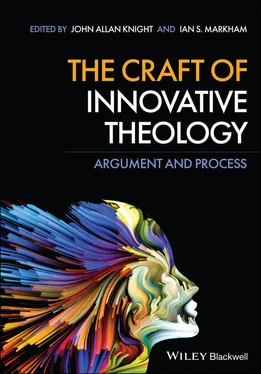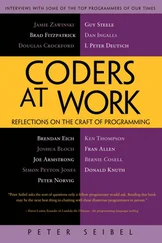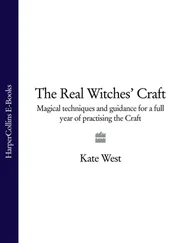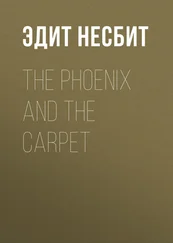Always keep your audience in mind as you’re writing. Write your essay in such a way that it answers questions that they are asking and is appropriate for their level of expertise. Scholars and other experts in the field can be expected to be familiar with technical language, while lay readers may need technical concepts explained.
The structure of your paragraphs should follow the roadmap in your introduction. Each paragraph should have a topic sentence that states the overall point of the paragraph. And at the beginning and end of each section (remember that each section is a step in the overall argument) you should include a “signpost” that references the roadmap in the introduction and indicates where the overall paper is going. If the argument is especially complex, your signposts can include summary reminders of the points in the argument that you have already established can be helpful. Topic sentences and signposts keep your reader oriented to the overall direction of the paper and how far along in the argument they are.
Once you have finished a draft and completed your first revision, ask a colleague to read it. This may become less necessary after you have become more experienced in publishing articles. Still, even experienced writers sometimes find it helpful to have a colleague read their essays. As the author, you know and have been living with your argument for some time. It’s therefore difficult for most authors to know how clear the essay’s argument is to someone reading it for the first time. It’s common in graduate school, however, to form dissertation groups of three or four students who read and discuss each other’s work before submitting it. This is especially helpful if you’re writing in a language other than your first language. Even if you don’t have a colleague read it, it’s a good idea to let it sit for a couple of days and then do a significant revision.
It’s very important, after your essay is finished, to proofread it carefully for typographical and grammatical errors, misspellings, etc. (including errors introduced by autocorrect!). Don’t rely on spellcheck! You may want to have a friend proofread your piece – after having gone over it repeatedly, it can be very difficult to see small errors. Some schools still offer proofreading services, though these are becoming rarer.
When you’re submitting your work, many journals ask for a cover letter. Don’t repeat the abstract in the cover letter or go through your argument in any detail. Instead, focus on the bigger picture, explaining what you think is most significant about your essay and why it is a good fit for the journal. This is a chance to emphasize your original contribution, but keep it brief.
After submitting an essay to a journal, unless the editor rejects it for being outside the scope of the journal, you will likely receive comments from reviewers (two, or possibly three) with their suggested changes. At this point, it is amazing how many writers who receive revise and resubmit letters never actually resubmit the essay. After receiving the reviewers’ comments, it’s probably a good idea to read them and then wait a couple of days before responding. More than once we have received reviews with comments we initially thought quite wrong, only to find ourselves agreeing with them after a few days. When resubmitting your essay after receiving reviews, you should submit a cover letter detailing the changes suggested by the reviewers and describing any changes you have made to the essay in response. Respond directly and professionally to every reviewer comment. You don’t necessarily have to comply with every suggestion; but if you disagree with a comment and disregard the suggestion, you should provide your justification for doing so.
You may experience some hesitation before submitting the essay. This is understandable, for once it’s submitted you lose some degree of control over it. It’s a difficult thing to submit a manuscript for publication. Even if it’s rejected from your first‐choice journal, submitting it is still an accomplishment and your work during the submission process will make it more likely that your second‐choice journal will accept it. So reward yourself in some way!
Learning to write at the highest level of the academy is hard. But we are committed to the view that stating complex and technical arguments with stylistic clarity can be learned through examples. We chose models of writing that reinforce certain basic principles – a good piece of academic writing has a signpost, it is fair to the opponents, it illustrates a grasp of the literature, and it always goes back to the primary sources.
We are hopeful that this book will assist those who aspire to write research articles. We hope the ultimate result is a growth in the academy, in the church, and in the world of thoughtful exponents of creative theology.
John Allan Knight and Ian S. Markham
1 1As you begin to write your dissertation, keep in mind that you will eventually want to publish it as a book. The following works are very helpful in this task: William Germano, From Dissertation to Book (Chicago: University of Chicago Press, 2005); idem, Getting It Published: A Guide for Scholars and Anyone Else Serious about Serious Books (Chicago: University of Chicago Press, 2001); Beth Luey, ed., Revising Your Dissertation: Advice from Leading Editors (Berkeley and Los Angeles: University of California Press, 2004); and Susan Rabiner and Alfred Fortunato, Thinking Like Your Editor: How to Write Great Serious Nonfiction–and Get It Published (New York: W.W. Norton & Co., 2002). While revising our dissertations for publication, however, we found it extremely useful to submit some portions (usually not a whole chapter) to journals for publication. We found the feedback from the anonymous reviewers to be extremely helpful. Thus, we have focused most of our comments on writing article‐length essays. In our comments here, we are indebted to Victoria Reyes, “How to write an effective journal article and get it published (essay),” Inside Higher Ed, https://www.insidehighered.com/advice/2017/05/09/how-write-effective-journal-article-and-get-it-published-essay; “How to get published in an academic journal: top tips from editors,” The Guardian, Jan. 3, 2015, https://www.theguardian.com/education/2015/jan/03/how-to-get-published-in-an-academic-journal-top-tips-from-editors; and Faye Halpern, Thomas A. Lewis, Anne Monius, Robert Orsi, and Christopher White, A Guide to Writing in Religious Studies, https://hwpi.harvard.edu/files/hwp/files/religious_studies.pdf.
Part I God and the Incarnation
1 Knowing God through Religious Pluralism
Tinu Ruparell
RESEARCH LEVEL 2
Editors’ Introduction
Good academic writing is clear and elegant. This opening essay meets both of those conditions. It is a provocative thesis: All serious theology must be shaped by religious pluralism. He believes that this has always been the case; and now it must continue to be “consciously” so in the future. He suggests five characteristics of such theology, which he sets out as the heart of the essay. He then concludes by responding to some of the objections that the reader might have to his argument .
Theology is always hybrid (see Box 1.1).
Box 1.1
Tinu Ruparell puts his thesis front and center. All theology draws on a range of traditions and sources. He then unpacks this assertion by insisting that all serious theological systems must take religious pluralism seriously. This is a shocking assertion. It means that all those who primarily work as theologians within a tradition are, in the view of Ruparell, not doing serious theology. The opening of this essay is controversial and provocative. The reader is invited to engage with the argument.
Читать дальше











